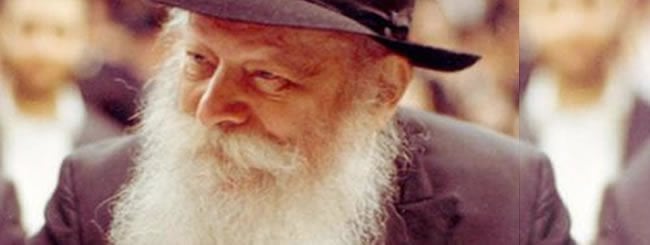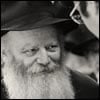
It was September of 1993. An hour earlier our plane from Tel Aviv had landed at JFK, and we were making our way, with our endless luggage, to Crown Heights, Brooklyn. We had come to celebrate the wedding of a close friend. I had never been to New York before.
Eventually, we pulled up alongside the beautiful home where we would be staying. But just as we were beginning to unpack our car, a wailing siren split the air. It was a familiar sound. I had heard it every Friday evening in Israel, announcing that it was time to light the Shabbat candles. But in the middle of the week? In the middle of the day?
Before I knew it, everyone was running. Sprinting. I had planned on carrying my bags into the house, but that was not to be. I was suddenly being pulled along with everyone else. Confused and bewildered, I looked at the woman whose hand was gripping mine and asked where exactly we were going. “To see the Rebbe,” was all she said.
Before I knew it, everyone was runningNext thing I knew, we were in a sea of people. I had never seen so many women crammed together before—all I saw were backs and heads. I was still holding onto Sarah, my friend’s sister-in-law to be. We had yet to be formally introduced, but I was now clinging to her for dear life, fearing that if we separated I would never find her, or my way back home, again.
Being that the Lubavitcher Rebbe had not been well, I understood that his coming out on the balcony during the prayer service was a big deal. But I hadn’t realized how big of a deal, until that moment.
The atmosphere was stifling, and I began to question what I was doing there. With literally hundreds of women crowded into the synagogue with me, there was no way I was even going to get a glimpse.
But I was wrong. I had no idea what Sarah was capable of. Before I knew what was happening, she yelled at the top of her lungs, “She’s never seen the Rebbe! Let her see the Rebbe!” And with that, the sea split. Somehow everyone managed to make a path, and Sarah and I walked to the front of the women’s section, where I had a perfect view of the Rebbe.
As soon as we got there, and I looked, the Rebbe turned his head towards me, seemed to look me directly in the eye, and nodded.
I had never seen the Rebbe before. How was it possible he knew I was there? And why would he have looked at me? I started to wonder if maybe it was wishful thinking, but from the looks of all those around me, it was pretty clear that they had seen it too. The Rebbe had looked right at me.
To backtrack a bit: I had not been raised with any connection to Chabad. I grew up in a traditional Jewish home, attended Conservative Jewish day school through junior high, and then continued on to public high school and college. By the time I went to Israel for my junior year in college, my Judaism meant nothing more to me than a cultural heritage. If anything, I made it my goal to be as multicultural as possible. I studied every philosophy, every religion, every “ism,” except for Judaism, of course. It was the one religion I knew the least about, but I was sure it had nothing to offer.
So when I started exploring my Jewish identity during my year in Israel, it came as a shock to all who knew me. But then again, all who knew me knew that once I became passionate about something, there was no stopping me. So when I began to fall in love with my land, my people and my religion, we all knew this would be a lifelong commitment. Needless to say, I have been learning ever since . . .
At that time I didn’t even know what Chabad was, but I knew that all the classes I loved, all the teachers who spoke directly to my soul, were teaching something called “Chassidut.” I didn’t know what that meant, but knew I liked it. And those teachers had something else in common as well. In all their homes was a similar picture of their great rabbi, whom they respected and admired in a way I had never seen before.
I had never seen the Rebbe before. How was it possible he knew I was there?He had a beautiful smile, blue eyes that seemed to look right into you, and a warmth and love that could be felt from the mere photograph. That was all I knew about Chabad, and all I figured I would ever know.
But on that day when the Rebbe looked at me from afar, I realized that you can know someone, deeply know and connect to someone, whom you have never met. In that second-long glance, everything changed. He was no longer “the Rebbe”; he was my Rebbe.
I never did get to meet the Rebbe in a more direct way. I never did get to receive a dollar and blessing from him on a Sunday morning. I never did get to sit in his office and receive his guidance. But there was much I did receive.
I was fortunate. I did get to see the Rebbe that one time. And during that visit, I wrote to the Rebbe and received a blessing to go back to California and graduate from college, which I did.
I graduated on June 12, 1994, the date known in Chabad as “Gimmel Tammuz,” the third day of Tammuz, the day our Rebbe passed away.
Did my life change forever on that day? Of course, as did the lives of everyone who knew the Rebbe. But I also discovered something. Because my relationship to the Rebbe was not based primarily on direct experience, but rather through philosophy and directive, my relationship to my Rebbe did not change that day.
It is hard to believe that it has been so many years since Gimmel Tammuz. There is a whole generation of Chabad chassidim who have never met their Rebbe in person. And yet they know him. They love him. And he continues to guide and inspire them.
For me, that is the message of Gimmel Tammuz. I don’t focus on what we have lost, though the loss is great beyond words, but rather on what we have. The Rebbe’s greatness was not limited to meeting him, hearing him speak or receiving guidance from him in a meeting. It was not limited to looking into his eyes or receiving a dollar from his hand. His greatness was that he was able to pass down to others, those who met him and those who never did, what it means to live life as a Jew, in a passionate, meaningful and positive way.
I don’t focus on what we have lost, though the loss is great beyond words, but rather on what we haveI saw the Rebbe only once. But I continue to see him every day of my life, in what I do, in who I am, and in the eyes of my four children.






